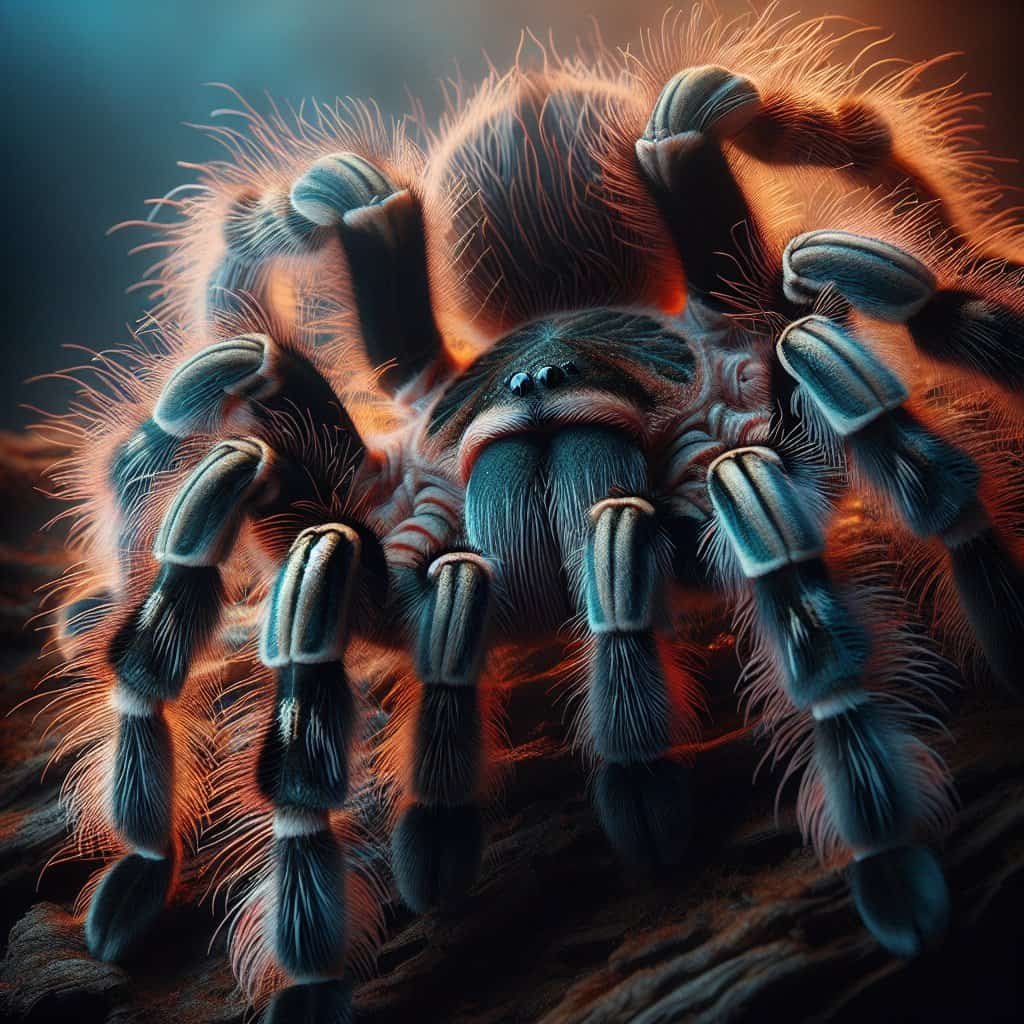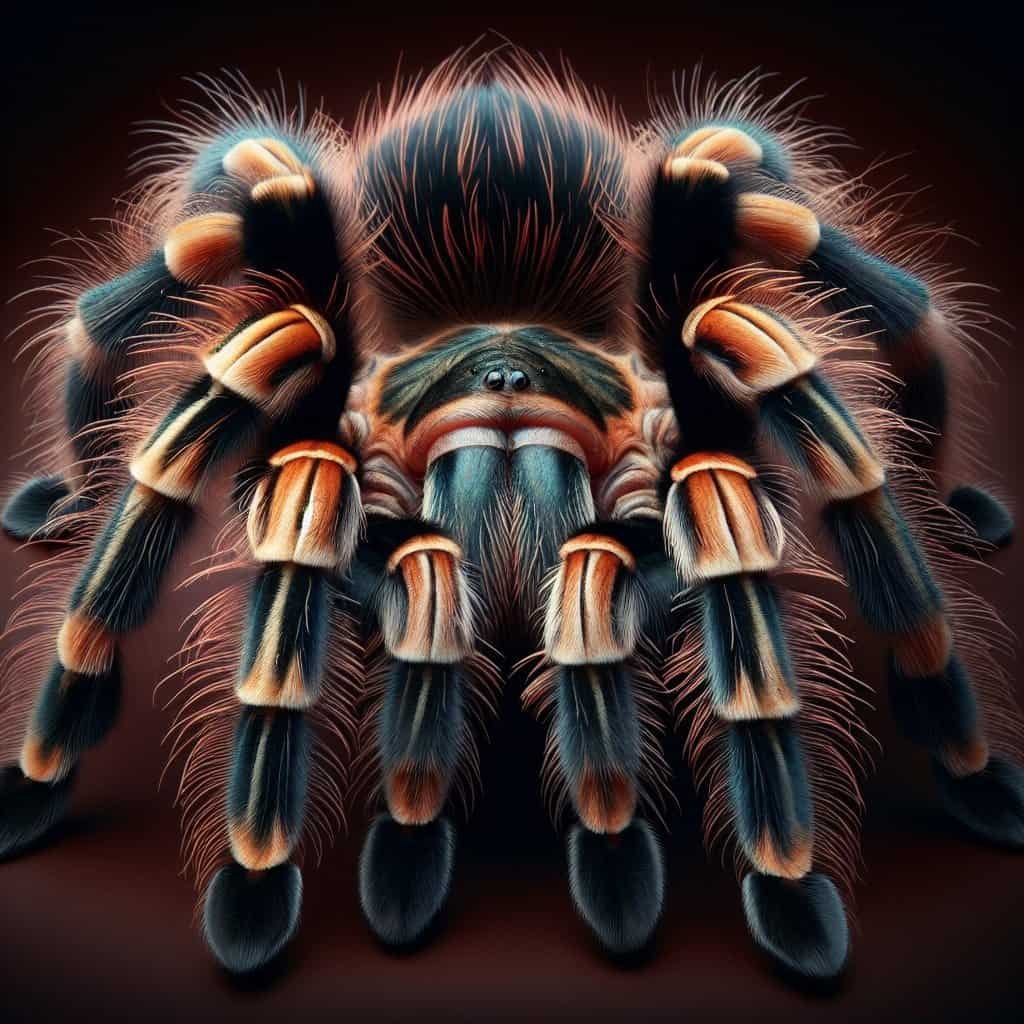Are you a first-time owner looking to welcome a unique and fascinating pet into your home? If you’ve always been curious about the world of tarantulas, but don’t know where to start, we’ve got you covered. In this article, we’ll explore the exciting world of beginner-friendly exotic tarantulas and help you choose the perfect arachnid companion that matches your needs and preferences. Whether you’re seeking a docile and easy-to-care-for species or a more interactive and visually stunning tarantula, we’ve got all the information you need to make an informed decision. So, let’s embark on this thrilling journey into the realm of exotic tarantulas together!
Recommended Exotic Tarantulas for First-time Owners
Are you considering getting a pet tarantula, but not sure where to start? Don’t worry, we’ve got you covered! In this article, we will explore the top ten recommended tarantula species for first-time owners. Tarantulas are fascinating creatures with unique appearances and behaviors, and they can make great pets for those interested in these exotic arachnids. Before diving into the specific species, let’s take a look at the factors to consider when choosing a tarantula as a beginner.

Factors to Consider for Beginner Tarantula Owners
1. Temperament
When choosing a tarantula, it’s important to consider their temperament. Some species are more docile and easygoing, while others can be skittish or defensive. As a first-time owner, it’s generally recommended to opt for a species with a calmer temperament. This will ensure a more pleasant and safe experience when handling and caring for your tarantula.
2. Handling
While tarantulas can be fascinating to observe, it’s important to note that not all species are suitable for handling. Some tarantulas have urticating hairs, which they can kick off when feeling threatened, leading to potential skin irritation. Additionally, the larger tarantula species can be strong and fast, making handling them challenging. It’s crucial to understand the handling limitations of each species before making your decision.
3. Size
Size matters when it comes to tarantulas, particularly for beginners. Smaller tarantulas are generally easier to care for and handle, while larger species require more space and attention. As a beginner, it’s often recommended to start with a smaller species and gradually work your way up to larger tarantulas as you gain experience and confidence in their care.
4. Feeding Habits
Tarantulas are carnivorous creatures, and their diet consists mainly of insects. When selecting a tarantula species, consider their feeding habits and whether the type of prey they require is easily obtainable in your area. Some tarantulas have specific feeding preferences, while others are more adaptable. Opt for a species that fits well with your ability to provide the necessary food for your pet.
5. Lifespan
Tarantulas are known for their longevity, with some species living for several decades. It’s essential to be aware of the lifespan of the tarantula species you choose, as it will require a long-term commitment. Consider whether you’re ready for a pet that can potentially outlive many other common pets, such as dogs or cats.
6. Maintenance
Tarantulas, like any other pets, require regular maintenance and care. This includes cleaning their enclosure, ensuring proper temperature and humidity levels, and monitoring for any signs of illness or stress. Before getting a tarantula, make sure you’re prepared to invest time and effort into providing the necessary care for your new eight-legged friend.
7. Availability
While there are numerous tarantula species around the world, not all of them are readily available in the pet trade. Some species may be rare or restricted in certain regions, making them harder to find. It’s advisable to choose a species that is easily accessible and commonly found in pet stores or from reputable breeders.
8. Cost
When building a budget for your tarantula journey, it’s important to consider the cost of purchasing the tarantula itself, as well as the required equipment and ongoing expenses. While tarantulas are generally not overly expensive pets, some species may command a higher price due to their rarity or specific characteristics. It’s crucial to ensure that you can afford the initial investment and the long-term costs associated with caring for your tarantula.
Now that we’ve covered the main factors to consider, let’s explore the top ten recommended tarantula species for first-time owners.
1. Brachypelma Smithi (Mexican Red Knee)
Appearance
The Mexican Red Knee tarantula is one of the most iconic species in the tarantula hobby. It features a striking combination of black and orange-red colors, with velvety black legs and a vibrant red coloration on its abdomen and carapace. This species showcases a sizeable adult body length of around 5 to 6 inches.
Temperament
Mexican Red Knee tarantulas are known for their generally calm and docile temperament, making them a great choice for beginners. While they may display some defensive behavior when threatened, they usually prefer to retreat rather than confront potential threats.
Habitat and Care
In the wild, Brachypelma Smithi originates from Mexico, where it inhabits dry scrublands and deserts. To replicate its natural habitat, provide a terrestrial setup with a substrate that allows burrowing, such as a mix of peat moss and vermiculite. Maintain a temperature range of 75 to 85 degrees Fahrenheit and provide a shallow water dish for humidity.
Feeding
Mexican Red Knee tarantulas have a typical tarantula diet, consisting mainly of small insects such as crickets and roaches. Feed appropriately sized prey items once or twice a week, adjusting the frequency according to the tarantula’s appetite.
Handling
While Mexican Red Knee tarantulas have a relatively calm temperament, handling should be approached with caution. It’s advisable to avoid handling this species unless necessary, as they can become stressed or agitated, potentially leading to defensive behaviors or accidental falls.
2. Grammostola Pulchra (Brazilian Black)
Appearance
The Brazilian Black tarantula is known for its strikingly dark appearance. Its entire body, including the carapace, abdomen, and legs, exhibits a deep jet-black coloration, making it stand out among other tarantula species. The Brazilian Black tarantula reaches a body length of around 4 to 5 inches as an adult.
Temperament
Grammostola Pulchra is renowned for its calm and docile demeanor, making it an excellent choice for beginners. These tarantulas rarely display defensive aggression, and they typically prefer to retreat rather than engage in confrontations.
Habitat and Care
Found in the tropical forests of Brazil, the Brazilian Black tarantula thrives in a moist and warm environment. Provide a terrestrial setup with a substrate that retains moisture, such as coconut fiber. Maintain a temperature range of 75 to 85 degrees Fahrenheit and provide a water dish for humidity.
Feeding
Brazilian Black tarantulas have an appetite for smaller insects, such as crickets and roaches. Feed them appropriately sized prey items once or twice a week to satisfy their dietary needs.
Handling
While Grammostola Pulchra tarantulas have a gentle disposition, it’s important to exercise caution when handling them. These tarantulas can be delicate, and accidental falls can lead to injuries. Handling should be done sparingly and only when necessary.
3. Aphonopelma Chalcodes (Desert Blonde)
Appearance
The Desert Blonde tarantula, as the name suggests, showcases a light brown or golden coloration, resembling the sandy desert landscapes it originates from. This medium-sized tarantula species reaches an adult body length of around 4 to 5 inches.
Temperament
Aphonopelma Chalcodes tarantulas are generally known for their calm and docile nature, making them suitable for beginners. While they may exhibit defensive behaviors when feeling threatened, they are generally not aggressive and prefer to retreat or flick their urticating hairs as a defense mechanism.
Habitat and Care
As the name implies, the Desert Blonde tarantula is found in the arid regions of the southwestern United States and northern Mexico. Provide a terrestrial setup with a dry substrate like sand or a sand/soil mixture. Maintain a temperature range of 70 to 85 degrees Fahrenheit.
Feeding
Desert Blonde tarantulas have typical tarantula feeding habits and enjoy a diet of small insects such as crickets and roaches. Feed them appropriately sized prey items once or twice a week, adjusting the frequency based on their appetite.
Handling
While Aphonopelma Chalcodes tarantulas have a generally calm temperament, handling is not recommended unless necessary. They may respond with defensive behaviors if they feel threatened, and their urticating hairs can cause skin irritation.

4. Avicularia Avicularia (Pink Toe)
Appearance
The Pink Toe tarantula is aptly named for the characteristic pink coloration on its legs and feet. It features a contrasting black or dark brown body with vibrant pink or orange-red coloration on the extremities. Pink Toe tarantulas have a moderate size, reaching a body length of around 5 to 6 inches as adults.
Temperament
Avicularia Avicularia tarantulas are generally known for their calm and docile temperament, making them a suitable choice for beginners. They are less likely to display defensive behaviors and are more inclined to hide or flee when feeling threatened.
Habitat and Care
Avicularia Avicularia tarantulas originate from the tropical rainforests of South America, where they inhabit trees and foliage. To mimic their natural habitat, provide a tall arboreal enclosure with plenty of vertical climbing space. Maintain a temperature range of 75 to 85 degrees Fahrenheit and provide a water dish for humidity.
Feeding
Pink Toe tarantulas have a varied diet consisting of small invertebrates such as crickets, fruit flies, and occasionally small roaches. Feed them appropriately sized prey items once or twice a week to fulfill their nutritional requirements.
Handling
While Avicularia Avicularia tarantulas have a generally laid-back nature, handling is not recommended unless necessary. These tarantulas are fast and agile climbers, making them prone to accidental falls and potential injuries. Observation and gentle interaction from outside the enclosure are usually sufficient for enjoying their presence.
5. Chromatopelma Cyanopubescens (Greenbottle Blue)
Appearance
The Greenbottle Blue tarantula is famous for its stunning and vibrant colors, making it a visually striking choice for tarantula enthusiasts. It showcases metallic blue legs, a contrasting orange-colored abdomen, and a velvety black carapace. Greenbottle Blue tarantulas reach a body length of around 4 to 5 inches when fully grown.
Temperament
Chromatopelma Cyanopubescens tarantulas are generally known for their skittish and defensive temperament, although they are not particularly aggressive. They are highly active and may exhibit fast movements and intense web-spinning behaviors, adding to their allure.
Habitat and Care
Greenbottle Blue tarantulas inhabit the arid regions of northern Venezuela, where they construct intricate web burrows. To mimic their natural habitat, provide a terrestrial setup with a substrate that allows burrowing. Maintain a temperature range of 75 to 85 degrees Fahrenheit and provide a shallow water dish for humidity.
Feeding
Greenbottle Blue tarantulas have a healthy appetite and readily accept a varied diet of small invertebrates such as crickets, roaches, and occasionally fruit flies. Feed them appropriately sized prey items once or twice a week to meet their dietary needs.
Handling
Due to their skittish nature, handling Greenbottle Blue tarantulas is not recommended. They are known for their intense web-spinning behaviors and fast movements, which can make handling challenging and potentially stressful for both the tarantula and the owner.

6. Caribena Versicolor (Antilles Pinktoe)
Appearance
The Antilles Pinktoe tarantula is a visually striking species known for its vibrant colors and unique patterns. It features a colorful blend of blue, purple, and pink hues on its legs and abdomen, with a black carapace. This medium-sized tarantula reaches a body length of around 4 to 5 inches as an adult.
Temperament
Caribena Versicolor tarantulas have a generally docile temperament, making them suitable for first-time owners. They are known for their calm and relaxed demeanor, exhibiting minimal defensive behaviors and preferring to retreat or flick urticating hairs when threatened.
Habitat and Care
Originating from the tropical rainforests of the Caribbean islands, Antilles Pinktoe tarantulas thrive in warm and humid environments. Provide a tall arboreal setup with plenty of vertical climbing space. Maintain a temperature range of 75 to 85 degrees Fahrenheit and provide a water dish for humidity.
Feeding
Antilles Pinktoe tarantulas enjoy a diet consisting of small insects such as crickets, fruit flies, and occasionally small roaches. Feed them appropriately sized prey items once or twice a week to meet their dietary requirements.
Handling
While Caribena Versicolor tarantulas have a generally calm temperament, handling should be done with caution. They have delicate bodies and can be easily injured or stressed. It’s advisable to minimize handling and focus on observing their natural behaviors within their enclosure.
7. Ephebopus Murinus (Skeleton Leg)
Appearance
The Skeleton Leg tarantula, also known as the “skeletal tarantula,” is named for its distinct pattern resembling a skeleton on its legs. It features a contrasting coloration of black and white, with a black carapace and abdomen. Ephebopus Murinus tarantulas have a considerable size, reaching a body length of around 5 to 6 inches as adults.
Temperament
Ephebopus Murinus tarantulas are known for their relatively calm and docile temperament, making them suitable for some beginner owners. However, they can display defensive behavior if feeling threatened, including defensive posturing, hissing, or leg “threat” displays.
Habitat and Care
Originating from the tropical rainforests of French Guiana, the Skeleton Leg tarantula prefers a warm and humid environment. Provide a terrestrial setup with a substrate that retains moisture, such as coconut fiber. Maintain a temperature range of 75 to 85 degrees Fahrenheit and provide a water dish for humidity.
Feeding
Skeleton Leg tarantulas have a typical tarantula diet, feeding on small insects such as crickets, roaches, and occasional pinky mice. Feed them appropriately sized prey items once or twice a week to meet their nutritional needs.
Handling
While Ephebopus Murinus tarantulas can have a relatively calm temperament, handling should be approached with caution. They are fast and agile, and their size and defensive behaviors may make handling challenging. It’s advisable to avoid handling this species unless necessary.

8. Poecilotheria Regalis (Indian Ornamental)
Appearance
The Indian Ornamental tarantula is known for its exquisite beauty and intricate patterns. It showcases a combination of black, gray, and metallic blue colors on its legs and abdomen, with a black carapace. As one of the larger tarantula species on this list, Poecilotheria Regalis reaches a body length of around 6 to 7 inches as adults.
Temperament
Poecilotheria Regalis tarantulas are known for their skittish and defensive temperament. They are incredibly fast and agile, showing intense defensive behaviors when feeling threatened. Due to their arboreal nature, they may also display threat displays by raising their front legs.
Habitat and Care
Originating from the dense forests of India and Sri Lanka, the Indian Ornamental tarantula prefers a warm and humid environment with vertical space for climbing. Provide a tall arboreal setup with plenty of climbing branches and foliage. Maintain a temperature range of 75 to 85 degrees Fahrenheit and provide a water dish for humidity.
Feeding
Indian Ornamental tarantulas have a healthy appetite and readily accept a diet of various small invertebrates, such as crickets, roaches, and occasionally small lizards. Feed them appropriately sized prey items once or twice a week to meet their nutritional needs.
Handling
Due to their skittish and fast nature, handling Indian Ornamental tarantulas is strongly discouraged. Their speed and aggressive defensive behaviors can pose a risk to both the tarantula and the handler. It’s best to observe and interact with them from outside the enclosure.
9. Psalmopoeus Cambridgei (Trinidad Chevron)
Appearance
The Trinidad Chevron tarantula is known for its striking and intricate patterns, which resemble the patterns found on chevron markings. It features a combination of brown, black, and cream colors on its legs and abdomen, with a dark brown carapace. This medium-sized tarantula reaches a body length of around 4 to 5 inches as an adult.
Temperament
Psalmopoeus Cambridgei tarantulas are known for their skittish and defensive temperament. They can display aggressive behaviors and assume defensive postures when feeling threatened. They are fast and agile, capable of running and jumping when provoked.
Habitat and Care
Originating from Trinidad and Tobago, the Trinidad Chevron tarantula requires a warm and humid environment similar to its natural habitat. Provide a terrestrial setup with a substrate that retains moisture, such as coconut fiber or forest floor substrate. Maintain a temperature range of 75 to 85 degrees Fahrenheit and provide a water dish for humidity.
Feeding
Trinidad Chevron tarantulas have an appetite for small insects, such as crickets, roaches, and fruit flies. Feed them appropriately sized prey items once or twice a week to meet their dietary requirements.
Handling
Due to their skittish and defensive nature, handling Trinidad Chevron tarantulas is not recommended. Their fast movements and unpredictable behaviors can make handling challenging and potentially stressful for both the tarantula and the handler.

10. Theraphosa Blondi (Goliath Birdeater)
Appearance
The Goliath Birdeater tarantula is the largest spider species in the world, known for its impressive size and intimidating appearance. It features a combination of dark brown and black colors on its legs and abdomen, with a thick set of urticating hairs on its abdomen. As the largest tarantula species, Theraphosa Blondi can reach a body length of up to 11 inches, with a leg span of over 12 inches.
Temperament
Theraphosa Blondi tarantulas are known for their generally calm and docile temperament, particularly when compared to their size. While they can display defensive behaviors, they are more prone to retreat or flick urticating hairs as a defense mechanism.
Habitat and Care
Originating from the rainforests of Northern South America, the Goliath Birdeater thrives in a warm and humid environment. Provide a terrestrial setup with a substrate that allows burrowing, such as a mixture of peat moss and vermiculite. Maintain a temperature range of 75 to 85 degrees Fahrenheit and provide a water dish for humidity.
Feeding
As the name suggests, the Goliath Birdeater has a notorious reputation for occasionally preying on small vertebrates, including birds and small mammals. However, in captivity, they can be fed a diet consisting primarily of appropriately sized insects such as crickets and roaches. Feed them once a week or adjust the frequency based on their appetite and growth rate.
Handling
Handling Theraphosa Blondi tarantulas is not recommended due to their enormous size and weight. The risk of injury caused by accidental falls or defensive behaviors is simply too great. It’s advisable to admire these giants from a safe distance and focus on their observation within their enclosure.
In conclusion, owning a tarantula can be a rewarding and captivating experience. By considering the factors mentioned above and choosing a beginner-friendly species, you can embark on a thrilling journey into the world of tarantula ownership. Whether you opt for the impressive size of the Goliath Birdeater or the vibrant colors of the Pink Toe, each species has its own unique qualities to offer. Remember to conduct further research on the specific needs and requirements of your chosen species to ensure their well-being and your own enjoyment. Happy tarantula keeping!
